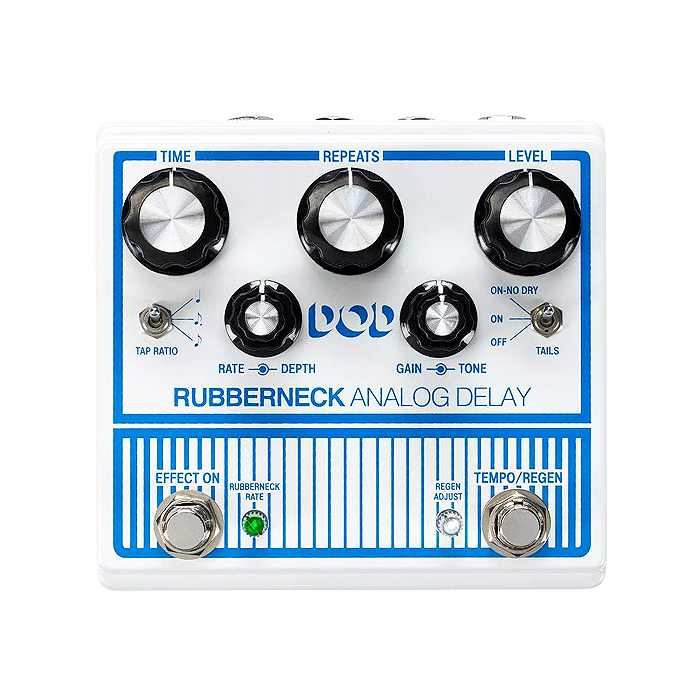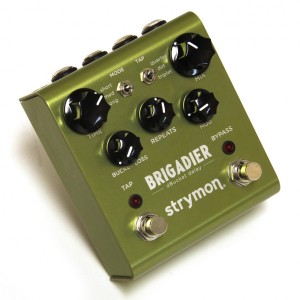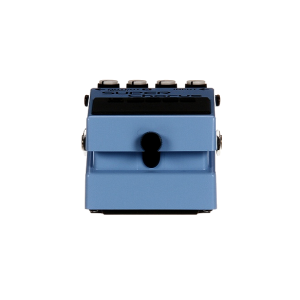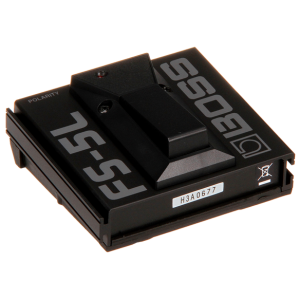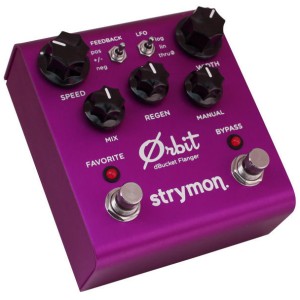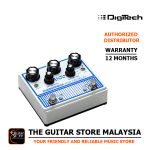
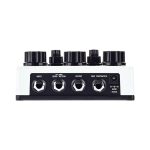

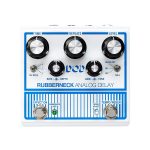
Digitech DOD Rubberneck Analog Delay Guitar Effect Pedal
Original price was: RM1,450.00.RM1,015.00Current price is: RM1,015.00.
Far from just an organic delay, this tank offers added functionality like the pitch-shifting phenomenon of “rubbernecking” and minute regen control for sounds from a warm slap to enormous oscillation.
3 in stock
The DOD Rubberneck Analog Delay is a pedal intended for electric guitar players. It can give you over a second of analog repeats, as well as controls for the delay’s timing, feedback, gain, tone, and more. For instance, concentric knobs allow you to manipulate the rate and depth of any modulations you’d like to introduce into the delay. A three-way toggle switch lets you choose how the tails will operate when you disengage the pedal. Will the tails automatically die, or fade off into the mix? The decision is yours with this front-facing switch.
Tap tempo is also offered via a dual-function footswitch, and you can choose among subdivisions with a three-position toggle switch, giving your repeats a triplet feel, if you so choose. The Tap Tempo footswitch also operates as a Regen control, which, when pressed down, will override the Repeats knob, giving you a feedback setting determined by the adjacent potentiometer. With this pot, you can achieve instantaneous modulations in feedback/repeats.
The pedal utilizes a true-bypass circuit path to preserve your dry signal’s integrity. However, the bypass switch also serves another function: It enables rubbernecking, an effect where the delay’s timing is stretched/compressed in time. You choose exactly how this timing changes with the Rubber Rate potentiometer, conveniently located next to the bypass footswitch.
The pedal sports an effects loop, so you can route external effects through its send/return jack, which accepts a 1/4″ TRS cable. If you’d like to use a compatible footswitch to control parameters, such as the FSX3, a 1/4″ jack is provided for this purpose. This pedal runs on a 9 VDC external power supply, which is available separately.
Features:
Up to 1.5 Seconds of Analog Delay
Tap Tempo with three tap-ratio selections
Rubbernecking allows ‘rubber band’ stretched delay performance
Modulation, Speed, and Depth controls
Delay, Gain, and Tone controls
Regen footswitch provides performance control of repeats
Effects loop allows you to insert effects into delay feedback path
Delay tails and dry signal defeat options
Remote footswitch input for added performance control
True bypass circuitry
Additional information
| Weight | 1 kg |
|---|





